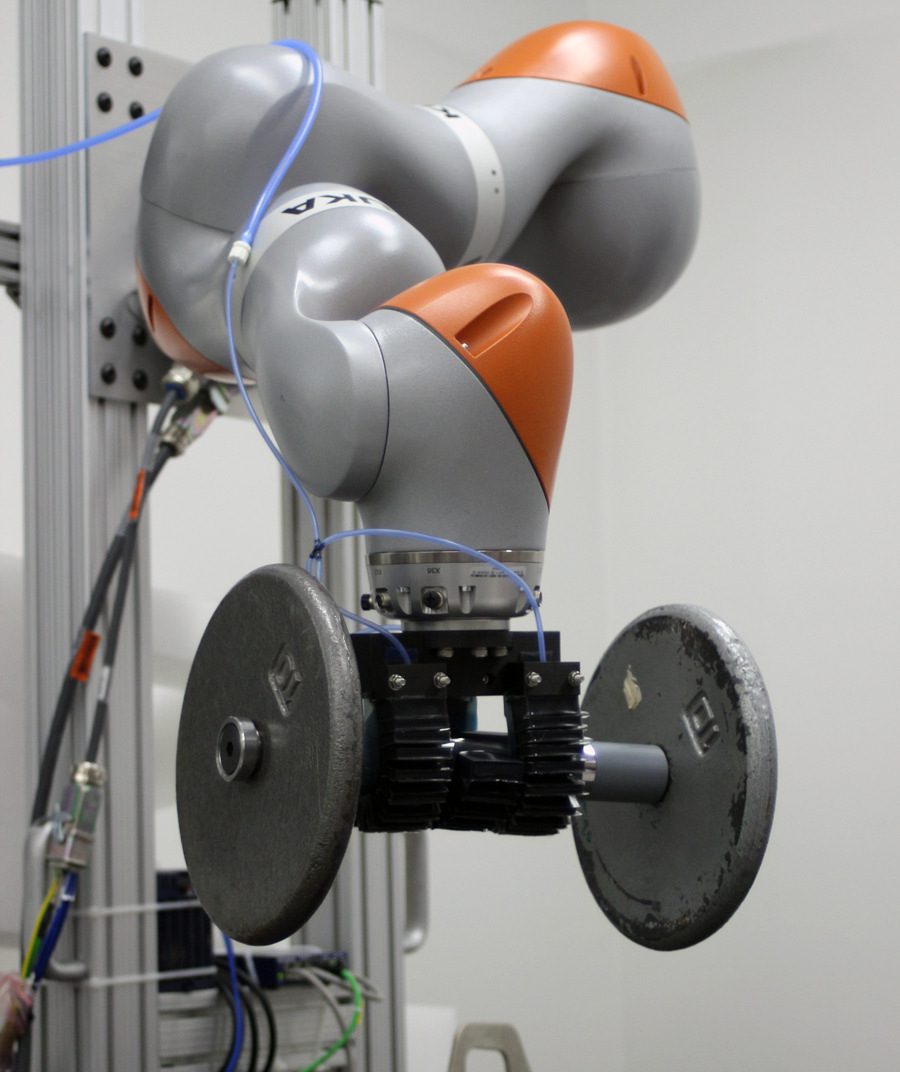A new class of adhesives — inspired by the mighty Gecko — have been developed by researchers in California to help soft robotic fingers get a better grip
A team of researchers have developed a robotic gripper that combines the adhesive properties of gecko toes and the adaptability of air-powered soft robots. It has the ability to grasp a wider variety of objects than current robotic grippers. It’s capable of lifting up to 45 lbs and can be deployed in a wide range of settings, from factory floors to the International Space Station.
Where did the gecko inspiration come from? Geckos are among the best climbers in the natural world because of a sophisticated gripping mechanism on their toes. Each toe has millions of microscopic hairs, about 20 to 30 times smaller than a human hair, that allow it to climb on virtually any surface. The hairs end in tiny nanostructures that interact at the atomic level with molecules on the surface the gecko is trying to grip.
Previously, researchers at Stanford University and the NASA Jet Propulsion Laboratory recreated this same mechanism with a synthetic material called a gecko-inspired adhesive. This material was used primarily on flat surfaces like walls.
In the latest work, researchers collaborated with engineers at the University of California San Diego. The team coated the fingers of a soft robotic gripper with the gecko adhesive, allowing it to get a firmer grasp on a wide range of objects, including pipes and mugs, while still being able to handle rough objects like rocks.
The gripper can also grasp objects in various positions, for example gripping a mug at many different angles.
Soft Robotic Gecko Gripper is State of the Art
Researchers demonstrated that the gripper could grasp and manipulate rough, porous and dirty objects, such as volcanic rocks—a task that is typically challenging for gecko adhesives. It also was able to pick up pieces of large, cylindrical pipe—a task typically difficult for soft robotic grippers.
“We realized that these two components, soft robotics and gecko adhesives, complement each other really well,” says Paul Glick, author of the the paper and a PhD student in the Bioinspired Robotics and Design Lab at the Jacobs School of Engineering at UC San Diego.
The gecko adhesives are made in a three-step process. An original master gecko adhesive mold with millions of microscopic structures is made in a clean room using a photolithography process. Then, wax copies of the master mold can be made at low cost.
The researchers then can make as many copies of the adhesive sheets from the wax mold as they often as want by using a process called spin coating. This allows them to make 10 to 20 adhesive sheets in under an hour.
Meanwhile, the soft robotic gripper itself is cast in 3D printed molds and is made from silicone-based rubber.
Next steps in the research include developing algorithms for grasping that take advantage of the adhesives, and investigating the use of this gripper for zero-gravity and space operations.
Researchers will present their findings at the 2018 International Conference on Robotics and Automation running from May 21 to 25 in Brisbane, Australia.

Source: UC San Diego News Center
Website: LINK


